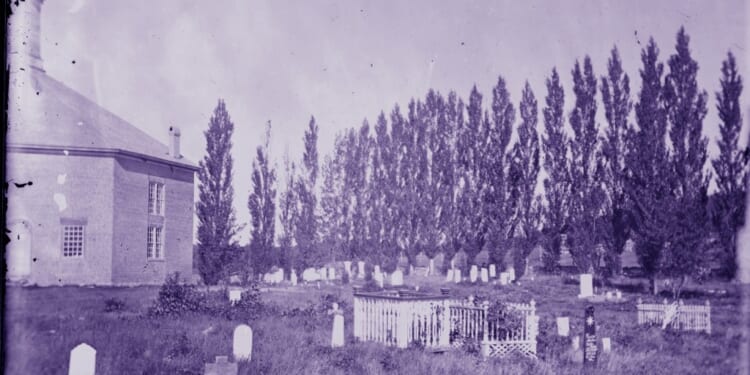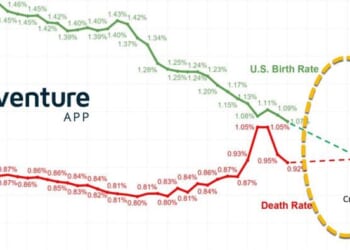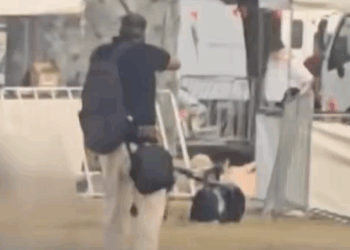
When I was in college, the house across the street from mine was said to be haunted. I never entered that house, but every time I walked in its shadow, I felt a little queasy. There was something unsettling about the place. Older students claimed to have held séances in the living room. Younger ones believed that these had opened a door to another world, one whose terrors were unleashed at night. Maybe there was something to that. Everyone who slept under the house’s roof shared dreams: of shrieking children, of vermin scuttling across the ceiling, of an old woman drifting down the halls. One day, the frightened students called a priest to perform an exorcism. The disturbances ceased—but only for a time.
A lot of places in the neighborhood were like this. Ours was an old Michigan town, with many buildings dating back to the 1880s. By the time I got there, nearly a century and a half of legend had wormed its way into their decaying beams. One night I sat up with the owner of the diner downtown as she closed up shop and whispered to me stories about the “lost” children she had glimpsed in the basement. Another night I listened in dumb silence as an older friend—no believer in the supernatural—told me how, once, a nocturnal screeching in his apartment, which was adjacent to the old Freemason hall, had compelled him to clutch a rosary till sunrise. Others spoke of strange apparitions in the fairgrounds, on the access roads, out over the lake.
For my own part, I never saw any ghosts. And until rather late in my time in college I can say with certainty that I did not believe in such things. (Demons, yes, but that is a story for another time.) My unbelief was challenged one weekend when a few friends and I were poking around the town cemetery. Just outside of its gates stood a half-collapsed building that had been abandoned for as long as anyone could remember. I say half-collapsed because the basement was still there; rumor held that the top floors had been consumed by fire. It had been for many years a Pentecostal church. But on the day that I kicked in the wooden door, just after sundown, all traces of godliness seemed to have fled the premises.
Inside, it was dark and smelled strongly of mold. Shaggy pieces of insulation hung where there had once been a drop ceiling. Strewn about the pews were damp hymnals, still open to songs of praise whose language I, a suburban Catholic, neither recognized nor understood. On the wall hung a large red banner that read, in all caps, “Holiness to the Lord.” I got the sense that the place had been vacated in a hurry, in the middle of a service: The pastor’s sermon notes were still on the pulpit.
As we picked our way through the ruins my friends and I discovered some odd objects. Children’s clothing dumped on the floor. Stumps of burnt-down candles. And, on a table, a mask made in the image of the Son of God. In the bathroom, I was startled by my reflection in the cracked mirror. For a moment I thought I caught sight of—was it just a trick of my flashlight?—something else. Above my head there was a rustling; in the floorboards below, a creaking. Suddenly I felt very cold. When I turned around, my friend was trying on the Jesus mask. I yelled at him to drop it, and we ran and ran until we collapsed back at home. I don’t have an explanation for what happened in that old church, and I’m not sure I want one. Probably it was just nerves. But still I wonder.
Old places seem to collect ghosts. This is particularly true of old places that don’t change, something which, until fairly recently in the United States, was a rarity. We like to say that we live in a young country, one that is constantly reinventing itself, tearing down the old, building up the new, and, incidentally, leaving little room for all but the most transient hauntings. Many of us hardly regard the spiritual world at all, except occasionally as a joke.
Oscar Wilde memorably satirized these peculiarly American attitudes in his short story The Canterville Ghost, which is, to me, one of the funniest and most touching ghost stories ever written. In the late 1880s, a materialistic American family moves into an old English country house, and, rather than recoiling with fear from its resident spirit, they terrorize him with their philistine devotion to consumer products. “I have come from a modern country, where we have everything that money can buy,” the paterfamilias declares at the beginning, adding, “I reckon that if there were such a thing as a ghost in Europe, we’d have it at home in a very short time in one of our public museums, or on the road as a show.” Throughout much of the story, the Americans display such a brazen irreverence toward all things incorporeal that the ghost eventually gives up on trying to scare them at all. “They were evidently people on a low, material plane of existence, and quite incapable of appreciating the symbolic value of sensuous phenomena,” he grumbles.
Wilde wrote The Canterville Ghost at the height of the Gilded Age. But his jabs still sting. We do have many ghosts in America, but they are not lonely specters wandering out upon the heath. Instead, they are figures of fun: lawn decorations, brand mascots, plush toys. Even genuine hauntings—I think of the events that formed the basis of The Amityville Horror—are quickly adapted for film or television, where the supernatural is repackaged as light entertainment. And when Americans do take ghosts seriously, we are more often than not speaking in metaphor. A ghost can be trauma or anxiety or guilt—rarely just a ghost.
But is a ghost ever just a ghost? It’s a question that Americans have been asking ever since we made landfall on the continent. In Europe, the answer is fairly simple. There are megalithic sites scattered all throughout the Old World that predate human memory, and it stands to reason that the spirits of civilizations long gone should linger about them, haunting their distant descendants in weird, spooky ways. No need for explanation; it’s just the natural order of things. But in America we have no ancient history on which to draw when confronted with the inexplicable. Yes, there are wispy memories of the Native Americans, whose burial grounds precipitate the horror of, say, Stephen King’s Pet Sematary—but for most of us, these ghosts are not our own, and the pre-Columbian past is too alien for us to access. We are left to our own powers of invention.
It is no mistake that the canonical American ghost story, Washington Irving’s The Legend of Sleepy Hollow, is explicitly about this process of invention. Even though today it is mostly remembered for the antics of the Headless Horseman, Irving makes clear throughout he is attempting something a little higher than fireside entertainment. His sketch is a study in localism, an attempt to explain why the old Dutch settlements of the Hudson River Valley, of all places in Jacksonian America, appear to be haunted.
“Local tales and superstitions thrive best in these sheltered, long-settled retreats,” Irving writes, lamenting that because so few people in the United States stay in one place for long, “there is no encouragement for ghosts in most of our villages, for they have scarcely had time to finish their first nap and turn themselves in their graves, before their surviving friends have travelled away from the neighborhood; so that when they turn out at night to walk their rounds, they have no acquaintance left to call upon.” For this reason, he concludes, “we so seldom hear of ghosts except in our long-established Dutch communities.”
And, with that setting in mind, he is able to spin out an entertaining tale of Ichabod Crane, an ungainly school teacher with an overactive imagination, who contends for the hand of a local beauty queen with Brom Bones, a yokel given to practical jokes. Irving uses his material resourcefully and concocts a plausible legend about the ghost of a headless Hessian soldier riding over the country roads decades after the Revolutionary War. When Crane seems to encounter this phantasmic figure one night on his way home, it is utterly convincing—though of course we all know it is Bones in disguise. But the story’s real stroke of mastery comes in the last few lines. After explaining that Crane fled the neighborhood, studied the law, and eventually became a judge, Irving adds that the people in the valley preferred to see Crane’s fate differently. No, they said, he was whisked away by the Horseman, and he became a spirit himself. If you listen closely, you can sometimes hear his ghost “chanting a melancholy psalm tune among the tranquil solitudes of Sleepy Hollow.”
The point here is that over time, legend and myth tend to displace fact. But the problem is that it takes a little while for time to pass and for cobwebs to gather. When Irving was writing in the 1820s, the country truly was young and restless. We were rapidly expanding across the continent, discovering new lands, establishing new states, building new cities. We had no time to settle in and reflect.
But after nearly 250 years, the United States is beginning to show signs of age. The country is bigger—and in certain places, emptier—than it ever was. Much has been left to linger. The most haunted places in America are those that time seems to have left behind. In these places, disconnected from the present, with little hope for the future, the past fills the void. In western New England, dilapidated towns are said to be filled with spirits of the old colonial frontier. In the South, the troubled dead still wander the Civil War battlefields. And in the post-industrial Midwest, phantoms have taken up residence in what was once the beating heart of the American Empire. Maybe people in these places are just nostalgic for a better past. Or maybe spirits are attracted to the downtrodden. I suspect it is a bit of both.
This at least is how I explain all those weird occurrences in that old Michigan town. I grew up in a suburb of Washington, D.C., that was only truly settled in the second half of the 20th century. We had no ghosts, no legends. But when I moved out to a dying factory town, something in the place’s air affected me. It took a few years, but gradually, just as in Sleepy Hollow, I began in spite of myself to pick up that “visionary propensity” that, as Irving wrote, is “imbibed by every one who resides there for a time.” Eventually I moved on, and the visions passed. But as long as I lingered, the past laid claim on my mind and soul. Indeed, what Irving observed of the atmosphere in Sleepy Hollow more than 200 years ago remains true of those who reside in our haunted regions today. “However wide awake they may have been before they entered that sleepy region,” he wrote, “they are sure, in a little time, to inhale the witching influence of the air, and begin to grow imaginative, to dream dreams, and see apparitions.”

















